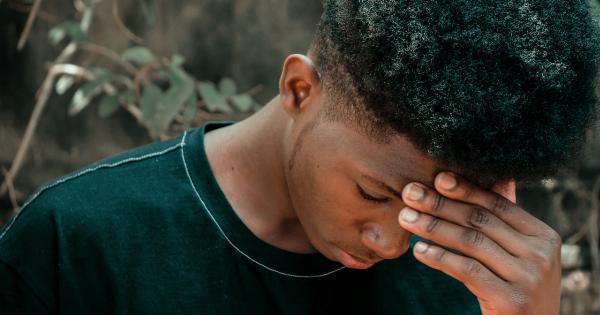Fainting, also known as syncope, is a temporary loss of consciousness that occurs due to a decrease in blood flow to the brain. It can be a scary experience for both the person who faints and those around them.
Fainting can happen for various reasons, and understanding the underlying causes can help in effectively handling the situation with calmness.
Recognizing the Signs of an Impending Faint
Before delving into the effective ways to handle fainting, it is crucial to be able to recognize the signs that someone may be about to faint.
Common signs include dizziness, lightheadedness, blurred vision, feeling weak or nauseous, pale skin, sweating, and a rapid or irregular heartbeat.
Maintaining Calmness and Providing a Safe Environment
When encountering someone on the verge of fainting, it is important to remain calm and composed. Panicking can only further escalate the situation and cause unnecessary distress.
Ensure that the person is in a safe environment, away from any potential hazards such as sharp objects or hard surfaces.
Assisting the Person to a Horizontal Position
If the individual is conscious but feeling faint, gently guide them to a horizontal position, either by helping them sit down with their head lowered between their knees or by lying them down on their back.
This position helps improve blood flow to the brain and can prevent a complete loss of consciousness.
Loosening Restrictive Clothing
Tight or restrictive clothing can worsen the feeling of lightheadedness. If the individual is wearing any tight clothing, such as belts, ties, or collars, loosen or remove them to relieve any potential constriction.
This can aid in enhancing blood circulation and potentially prevent fainting.
Elevating the Legs
If the person has lost consciousness or remains on the verge of fainting, elevating their legs slightly can help improve blood flow to the brain.
Prop their legs up on a stable surface, such as a chair or a stack of pillows, ensuring that their legs are above heart level. This technique can aid in restoring consciousness.
Applying Cold Compresses
If available, applying a cold compress (such as a damp towel or ice pack) to the person’s forehead or back of the neck can help stimulate the body’s natural response to regain consciousness.
The cold temperature can constrict blood vessels and increase blood flow to the brain, aiding in a quicker recovery.
Encouraging Deep Breathing and Relaxation
Breathing deeply and slowly can help increase oxygen intake and promote relaxation. Encourage the person to take slow, deep breaths, inhaling through their nose and exhaling through their mouth.
This can help stabilize their breathing and prevent hyperventilation.
Offering Water and Hydration
While fainting is often not directly caused by dehydration, offering the person some water to sip can be beneficial. Hydration can help regulate blood pressure and ensure adequate blood volume, potentially preventing future episodes of fainting.
Seeking Medical Assistance if Necessary
In most cases, fainting episodes are harmless and resolve on their own. However, there are situations where medical assistance should be sought immediately.
If the person remains unconscious for an extended period, experiences chest pain or difficulty breathing, sustains an injury during the fall, or if it is their first fainting episode, it is crucial to contact emergency services for further evaluation and guidance.
Implementing Lifestyle Changes to Prevent Recurring Fainting
For individuals who experience frequent fainting episodes, it is important to identify and address the underlying causes.
Consulting with a medical professional can help determine if there are any underlying medical conditions or medications contributing to the fainting. Adjustments to medications or lifestyle habits, such as regulating blood pressure, maintaining proper hydration, avoiding triggers, and managing stress, can significantly reduce the likelihood of future fainting episodes.




























